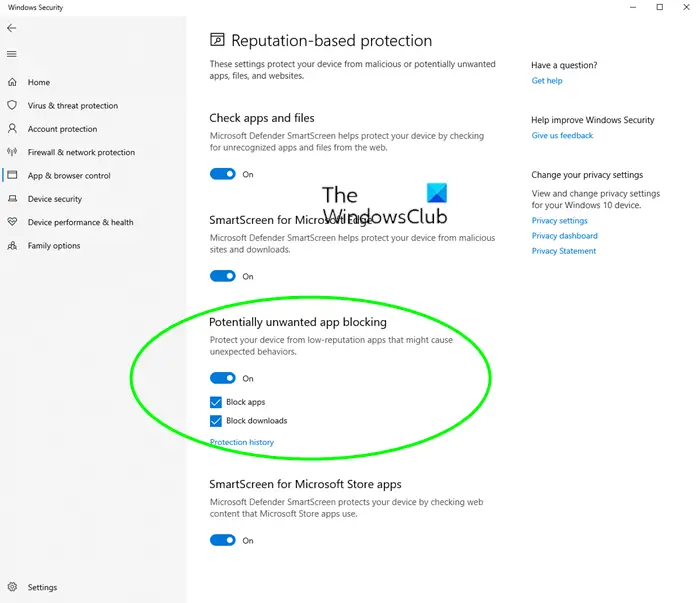Potential Unwanted Applications (PUA or PUP) is a threat classification based on reputation and research-driven identification. They are typically Crapware or Bundleware, and such software that you really do not want on your system. You should know that PUP or PUA is not a virus or ransomware, but they are marked as Unwanted because they can be annoying. The characteristic behavior of PUA is as follows:
Offer other software as an advertising bundleInstall software without your consentActively tries to evade detection by security products or differently behave when they find a security software guarding the Windows 10 PC.
Potentially Unwanted Applications protection in Windows 11/10
Windows Security has Reputation-based protection that can help protect your PC from potentially unwanted applications. To turn on or off Potentially Unwanted Applications protection in Windows 11/10: Once you have done this, your Windows computer will be protected against Potentially Unwanted Application download. PUA protection will quarantine the PUP file and prevent them from running if it meets one of the following conditions: Read: How use Smart App Control in Windows 11
How is PUA Protection different from SmartScreen
While it may sound that they are similar, but they aren’t. While SmartScreen protects from malicious sites and downloads, PUA blocks downloads of low reputation apps that might cause unexpected behaviors. The former is more concerned about sites, ransomware, virus while the later wants to prevent the downloads instantly. You can also turn on or off PUP Protection using Group Policy, Registry, or PowerShell in Windows 11/10. This post will show you how to enable Potentially Unwanted Application protection in the Edge browser. Related read: What is Potentially Unwanted Modification (PUM)? Prevention, Identification, Removal.

